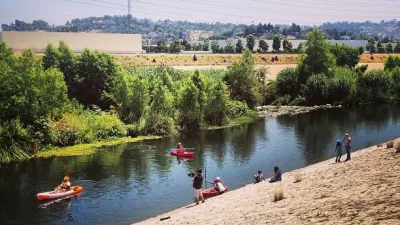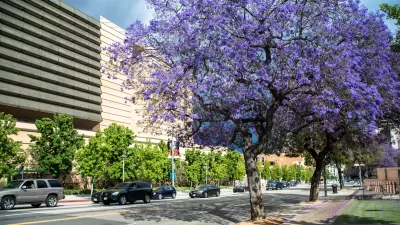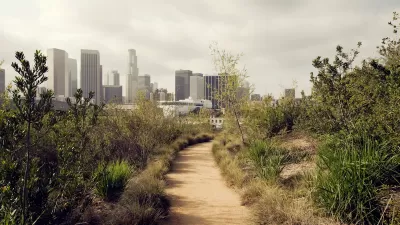City and county leaders shared their plans for millions in new annual revenue at the 2017 VerdeXchange Conference.

After a comprehensive survey revealed a serious lack of quality open space in Los Angeles County, voters overwhelmingly approved a November ballot measure providing $93 million a year for existing and new parks countywide.
Los Angeles City Councilmember David Ryu and Planning Commissioner Richard Katz joined Santa Monica Mountains Conservancy Chair Irma Muñoz and Trust for Public Land’s Tori Kjer at the recent VerdeXchange Conference (VX2017) to envision how the 88 cities, unincorporated areas, and community partners of Los Angeles County will take advantage of this opportunity.
They explain that the parks assessment grounded claims of need across the county in real data, providing a basis for the equitable distribution of funding. A disparity in access to quality open space was a key finding of the survey.
The new funding will prioritize multi-agency cooperation and public-private partnerships, as well as multi-benefit projects. Those could be parks that include free community gardens, or that contribute to the county's overall climate resilience by acting as stormwater capture and treatment facilities.
It will also go to projects that haven’t been traditionally thought of as fitting into park measures: beaches, watersheds, and real multi-benefit projects. We can absolutely get that slide and those swings in that park, but we can also get stormwater parks, so that we’re fulfilling multiple purposes with our open spaces.
The city of Los Angeles—which recently secured its own new parks funding from a reformed developer fee—also plans to pursue joint-use arrangements with schools that have open space or playgrounds.
"It's all about giving priority to projects that stretch every dollar by leveraging partners, state funds, county funds, and federal funds," Councilmember Ryu explains.
FULL STORY: Parks and Placemaking: How Will LA Spend $93 Million Annually in Park Funding?

Maui's Vacation Rental Debate Turns Ugly
Verbal attacks, misinformation campaigns and fistfights plague a high-stakes debate to convert thousands of vacation rentals into long-term housing.

Planetizen Federal Action Tracker
A weekly monitor of how Trump’s orders and actions are impacting planners and planning in America.

Chicago’s Ghost Rails
Just beneath the surface of the modern city lie the remnants of its expansive early 20th-century streetcar system.

Bend, Oregon Zoning Reforms Prioritize Small-Scale Housing
The city altered its zoning code to allow multi-family housing and eliminated parking mandates citywide.

Amtrak Cutting Jobs, Funding to High-Speed Rail
The agency plans to cut 10 percent of its workforce and has confirmed it will not fund new high-speed rail projects.

LA Denies Basic Services to Unhoused Residents
The city has repeatedly failed to respond to requests for trash pickup at encampment sites, and eliminated a program that provided mobile showers and toilets.
Urban Design for Planners 1: Software Tools
This six-course series explores essential urban design concepts using open source software and equips planners with the tools they need to participate fully in the urban design process.
Planning for Universal Design
Learn the tools for implementing Universal Design in planning regulations.
planning NEXT
Appalachian Highlands Housing Partners
Mpact (founded as Rail~Volution)
City of Camden Redevelopment Agency
City of Astoria
City of Portland
City of Laramie





























